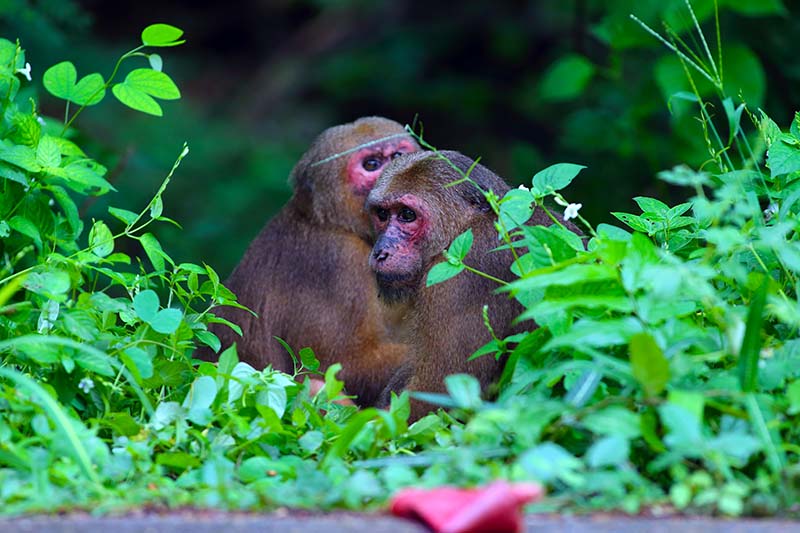
2.5-minute read
We think one of the best ways to honor Endangered Species Day (May 21) is to increase awareness of the most precious wild creatures remaining on our planet because we believe that to know them is to love them and to love them is to protect them. So, to aid the conservation of a rare one, we’d like to introduce you to the critically endangered northern hairy-nosed wombat. A species is classified as critically endangered if its population has declined by at least 90%. At last count, there were only 250 of the iconic Australian marsupials left in the wild. Although conservation scientists are working diligently to prevent the hairy-nosed wombat’s extinction, the cuddly-looking critter remains one of the most at-risk animals on Earth.
For your ESD information, here’s a wombat what’s what:
Claim to fame:
In addition to having an unusually furry snout, the northern hairy-nosed wombat is the largest, plant-eating, burrowing mammal on Earth. The average weight of an adult wombat is about 70lbs—roughly the same weight as a golden retriever. Now, that’s a big digger! By comparison, a burrowing groundhog weighs only 9 lbs.
Aboriginal name:
When the Dharug people of southeast Australia first came across the short-legged, bear-like marsupial, they christened the animal wambad, which officially evolved into wombat in 1798. Although they’ve also been called native badgers and native bears, we think they definitely have more of a wambad look about them.
Preferred Hangout:
Underground. Wombats are expert excavators, digging 70 to 100 ft of tunnels, 10 to 13 ft below the earth with multiple entrances for easy access. The northern hairy-nosed wombat’s burrowing habitat once spanned parts of New South Wales and Queensland, but now they can only be found in Epping Forest National Park and Richard Underwood Nature Refuge in Queensland. However, their reduced range hasn’t stopped the wombats from digging in—they’ve tunneled out 470 burrows in their Epping Forest habitat.
Social style:
The nocturnal hairy-nosed wombat is a social distancing specialist, spending about 70% of burrow time on its lonesome. In 1300 hours of video recorded in Epping Park, there were only 12 social interactions. Although wombats occasionally burrow hop, they prefer home base, avoid unfamiliar situations and aren’t particularly chatty. When the introverted marsupials do vocalize, they communicate through whispery squeaks. You can listen to the cautious chittering of the common wombat here.
Favorite foods:
The wombat might look a bit like a bear, but it eats like a bunny—90% of its diet is grasses.
Special skills:
What’s good for the wombat is good for healthy ecosystems. Burrowers help to improve soil quality and plant diversity and create habitats for other endangered animals like wallabies, echidnas, and bettongs.
Why they need TLC:
Between 1870 and 1920, the northern hairy-nosed wombat was nearly wiped out. Researchers believe that their burrows were destroyed to eliminate pests that inhabited their tunnel system. Habitat loss, invasive species, and competition for food resulting from worsening drought continue to take a toll on the critically endangered animals.
How to help:
Like many of Australia’s amazing species, wombats need help to survive the increasing threats of climate change and habitat loss. If you would like to find out how you can support the work of scientists and volunteers dedicated to ensuring the northern hairy-nosed wombat can tunnel on, visit the good people at The Wombat Foundation.
To learn more about the status of threatened wildlife globally, check out the International Union for the Conservation of Nature’s (IUCN) Red List—the world’s most comprehensive source of information for endangered flora and fauna. For a compelling overview of where we are on the wildlife conservation front and where we’re headed, we highly recommend The Sixth Extinction by Elizabeth Kolbert.
And because we’d like to leave you with some hopeful news, you can learn about a bold initiative launched by Leonardo DiCaprio to restore some of the planet’s rarest species at re:wild.org. The other good news is you don’t have to be a celebrity to help protect and preserve wildlife. You can find local ESD events, educational material, and more recommended reads at Endangered.org. Then head on over to World Wildlife Fund to sponsor a favorite creature year-round. Until we get Endangered Species Day off the calendar, it’s all hands on deck.




































































